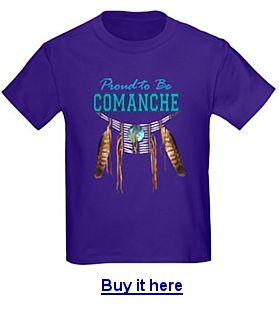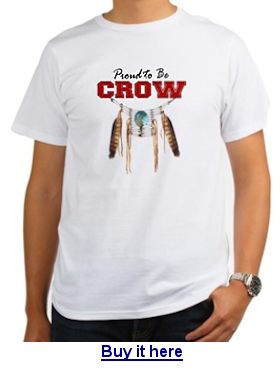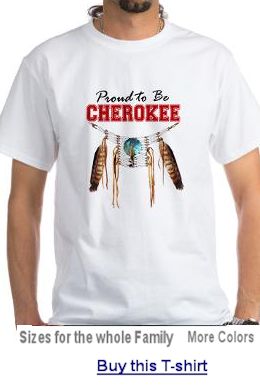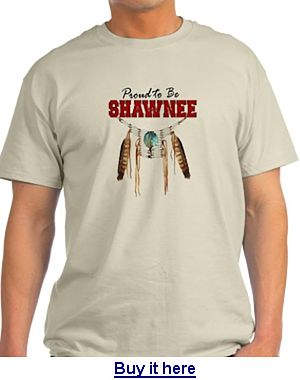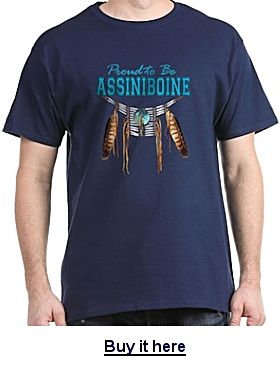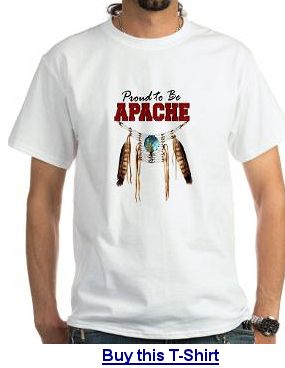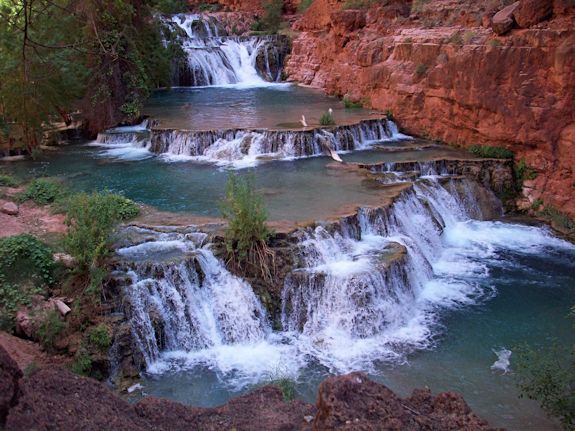The Comanche people are federally recognized as the Comanche Nation, headquartered in Lawton, Oklahoma. They were once part of the Shoshone peoples.
US Tribes A to Z (Federally Recognized)
US Tribes A-Z
Indigenous peoples in what is now the contiguous United States are commonly called “American Indians”, or just “Indians” domestically, but are also often referred to as “Native Americans”. In Alaska, indigenous peoples, which include Native Americans, Yupik and Inupiat Eskimos, and Aleuts, are referred to collectively as Alaska Natives.
Native Americans and Alaska Natives make up 2 percent of the U.S. population, with more than 6 million people identifying themselves as such, although only 1.8 million are recognized as registered tribal members. Tribes have established their own rules for membership, some of which are increasingly exclusive. More people have unrecognized Native American ancestry together with other ethnic groups. A minority of U.S. Native Americans live in land units called Indian reservations. Some southwestern U.S. tribes, such as the Yaqui and Apache, have registered tribal communities in Northern Mexico. Similarly, some northern bands of Blackfoot reside in southern Alberta, Canada, in addition to within US borders.
A number of Kumeyaay communities may be found in Baja California del Norte.
Indian tribes are unique legal entities in the United States and are distinct political communities with extensive powers of self-government. Tribal sovereignty predates the U.S. government. Treaties, federal statutes and executive agreements over the past 200 years have established a special trust relationship between tribes and the federal government. The federal Bureau of Indian Affairs (B.I.A.) has been designated by the Secretary of the Interior as the primary agency to protect tribal interests and administer trust responsibilities.
Federal Tribes (F)
Federal tribes followed by (F) have recognition by the US. Government. Recognized Indians are those who are enrolled members of tribes from whom the federal government has acknowledged treaty or statutory obligations. There are 566 federally recognized indian tribes (as of January 14, 2015).
State Tribes (S)
State tribes marked with an (S) have recognition at the state level, but may or may not have federal recognition by the US Government.
Terminated Tribes (T)
During the 1950s, in a move to assimilate Native Americans into mainstream America, the U.S. government ended federal trusteeship of roughly three percent of the country’s Native American population through a process called termination. Of the terminated tribes, 62 were native to Oregon and 41 were in California. Others were in Kansas, Minnesota, Montana, Nebraska, New York, North Dakota, Utah, and Wisconsin. Even though the tone of the termination legislation was emancipation, the net effect of the policy on terminated tribes was cultural, political and economic devastation. In recent years, however, vigorous efforts have been mounted by terminated tribes to reestablish or restore the trust relationship. Terminated tribes are marked with (T).
UnRecognized Tribes (U)
Un-recognized tribes marked with (U) are historical indian tribes or people with Indian ancestry who are not recognized by either the Federal Government or any state government entity. Unrecognized Indians include those from tribes with whom federal relations have been severed by congressional action (termination) and those whose tribe has never been recognized by the federal government. They also include persons of indian ancestry who, for fear of persecution, fled or hid their Indian ancestry during the time the early Indian Rolls were being taken in the mid to late 1800s and early 1900s.
Petitioning Tribes (P)
Many of the Terminated Tribes and Unrecognized tribes are today petitioning to again be recognized as tribal governments with sovereign nation status or to be included in tribes they were previously terminated from. Those petitioning tribes are marked with a (P), where known. Inclusion on this site does NOT mean an endorsement has been made for recognition of any particular tribe. All entities claiming to be US indian tribes that we are aware of have been included for completeness. Where known, we have indicated official tribal status with our Key Chart. In many cases we have not verified the validity of the claim of tribal status, and leave it to your own common sense or further research to validate tribal claims.Alternate names in parenthesis are either older names that were once used to identify that tribe, shortened common names, or they are misspellings.
Most Recent Articles:
The Confederated Salish and Kootenai Tribes are a federally recognized tribe which includes the Bitterroot Salish, the Pend d’Oreille and the Kootenai tribes. Their aboriginal territory exceeded 20 million acres at the time of the 1855 Hellgate Treaty.
Two Salish speaking groups, the Upper and Lower Chehalis, are the principle tribes that make up today’s Confederated Tribes of the Chehalis Reservation. Some Klallam, Muckleshoot, Nisqually, and Quinault peoples are also members of this federally recognized tribe.
Twelve bands or tribes make up the federally recognized Confederated Tribes of the Colville Reservation indian tribe. Before the reservation era, each of these were separate tribes with their own culture and language.
The Confederated Tribes of Coos, Lower Umpqua, and Siuslaw Indians trace their ancestry back to the aboriginal inhabitants of the South-Central coast of Oregon. The confederation is made up of three tribes (four Bands): two bands of Coos Tribes: Hanis Coos (Coos Proper), and Miluk Coos; the Lower Umpqua Tribe; and Siuslaw Tribe.
The Confederated Tribes of the Goshute Reservation include members of the Goshute, Paiute and Bannock tribes. They have retained strong ties to their culture and homeland, still depending heavily on wildlife and plant species on and off reservation. Most of the Goshute reside on the 113,000 acre reservation at the base of the Deep Creek mountain range.
Twenty-seven native American tribes make up the modern day tribe known as the Confederated Tribes of the Grand Ronde Community of Oregon.
The Confederated Tribes of Siletz Indians of Oregon generally include Clatsop, Chinook, Klickitat, Molala, Kalapuya, Tillamook, Alsea, Siuslaw/Lower Umpqua, Coos, Coquelle, Upper Umpqua, Tututni (including all the lower Rogue River Bands and those extending up the coast to Floras Creek and down to Whales Head), Chetco (including all of the villages from Whales Head to the Winchuck River), Tolowa, Takelma (including the Illinois Valley/mid-Rogue River and Cow Creek peoples), Galice/Applegate, and Shasta peoples.
The Cayuse, Umatilla and Walla Walla tribes make up the Confederated Tribes of the Umatilla Indian Reservation. The reservation is located near Pendleton, Oregon in northeastern Oregon at the base of the Blue Mountains in the Columbia River Plateau.
The Walla Walla (later called the Warm Springs), Wasco, and Paiute tribes collectively make up the modern day Confederated Tribes of the Warm Springs Reservation of Oregon. Each tribe has its own unique history and heritage.
The Confederated Tribes and Bands of the Yakama Nation includes these bands: Kah-miltpah, Klickitat, Klinquit, Kow-was-say-ee, Li-ay-was, Oche-Cotes, Palouse, Pesquose, See-ap-Cat, Sk’in-pah, Shyiks, Wisham, Wenachapam, and Yakama.
The Yakamas have lived in Central and South Central Washington since time immemorial. The lands of the Yakama extended in all directions along the Cascade Mountain Range to the Columbia River and beyond. Tribal elders say their distance of travel sometimes took them as far north as Canada and as far south as California.
Coquille Indian Tribe
22 ViewsThe federally recongnized Coqille Indian Tribe is descended from people who inhabited the watersheds of the Coquille River system, a small portion of Coos Bay at the South Slough, and areas north and south of the Coquille River mouth where it enters the ocean at present day Bandon, Oregon.
The Death Valley Timbi-sha Shoshone Tribe has a 40-acre federal reservation in Death Valley (Inyo County), in south-central California, near the Nevada border. This site is commonly known as Indian Village. They also have additional lands in and near Death Valley National Park.
Cortina Indian Rancheria
22 ViewsCortina Indian Rancheria is a reservation for a federally recognized tribe of Wintun people. It is located about 15 miles west of Arbuckle, California. Wintun is the name generally given to a group of related Native American tribes who live in Northern California, including the Wintu (northern), Nomlaki (central), and Patwin (southern) tribes.
Coushatta Tribe of Louisiana
22 ViewsThe Coushatta Tribe of Louisiana is a federally recognized Native American Tribe. The Coushatta people live primarily in Louisiana, with most living in Allen Parish, just north of the town of Elton, Louisiana, and east of Kinder, Louisiana.
The Cow Creek Band of Umpqua Tribe of Indians located in South Western Oregon is one of nine federally recognized Indian tribal governments in the State of Oregon.
Cowlitz Indian Tribe
22 ViewsThe Cowlitz Indian Tribe is a federally recognized tribe of ancient Northwest Coast Salish people in Southwestern Washington state.
The Coyote Valley Band of Pomo Indians of California descended from the Shodakai Pomo. Shodakai means “Valley in the East.” In 1850, before Lake Mendocino existed, the land belonged to the Shodakai Pomo. This land was also a major Indian trail from Ukiah Valley to Potter Valley and Lake County.
Crow Tribe of Montana
22 ViewsThe Crow Tribe of Montana is a federally recognized indian tribe which split off from the Hidatsa tribe in the 1400s. The Battle of the Little Big Horn occurred near where the agency headquarters is located today, about 100 miles from the present day city of Billings, Montana.
The Crow Creek Sioux Tribe consists of the members of the Isanti and Ihanktowan divisions of the Great Sioux Nation. The Crow Creek Sioux Tribe is composed of descendants of two Divisions of Dakota and Nakota people. The Ihanktowan, or Yankton and Yanktonais are called the Middle Sioux. The Isanti or Dakota people are comprised of four bands that lived on the eastern side of the Dakota Nation.
Delaware Nation
22 ViewsThe Delaware Nation, or Lenape, also known as Lenni Lenape, signed the first-ever “Indian treaty” with the United States of America in 1778, and are the oldest known nation in the Eastern US.
Delaware Tribe of Indians
23 ViewsWhile the Delaware Indians were the first tribe to sign a treaty with the United States, they have just been successful in regaining federal recognition in 2002 as a separate tribe, now given the title of Delaware Tribe of Indians.
The Pomo Indians, who are not one tribe but rather a group of more than 70 different tribes, have ties to the Alexander Valley, located along the Russian River between Healdsburg and Cloverdale in northern California, that date back as far as 12,000 years ago. Some of the descendants of these early inhabitants are now members of the Dry Creek Rancheria Band of Pomo Indians.
Eastern Band of Cherokee Indians
22 ViewsThe federally recognized Eastern Band of Cherokee Indians is the only federally recognized tribe in the state of North Carolina. The Eastern Cherokee are those Cherokee people who remained on their traditional homelands when most of the Cherokee were forcibly relocated to Oklahoma.
Eastern Shawnee Tribe of Oklahoma
22 ViewsThe Eastern Shawnee Tribe of Oklahoma are descended from the mixed Seneca-Shawnee band which left Lewistown, Ohio and came to the Indian Territory in 1832. Recognized as a separate tribe in 1867, they organized as the Eastern Shawnee Tribe of Oklahoma during the 1930s.
The Elem Indian Colony of Pomo Indians is the only Southeastern Pomo indian tribe that is a federally recognized tribal government. The Southeastern Pomo Tribes of Lake County, California were a united sovereign fishing and gathering nation that consisted of four main villages. Today, there are roughly 20 Pomo rancherias in northern California.
Elk Valley Rancheria
22 ViewsElk Valley Rancheria is a federal reservation of Tolowa Indians in Del Norte County, near Crescent City, on the Pacific Coast just south of the Oregon border. Some Yurok people are also enrolled in this ranceria. The Tolowa also live on the Smith River Rancheria.
Ewiiaapaayp Band of Kumeyaay Indians
22 ViewsThe Ewiiaapaayp Band of Kumeyaay Indians is a federally recognized Kumeyaay Indian tribe in California formerly known as the “Cuyapaipe Band of Mission Indians” or the “Cuyapaipe Community of Diegeuno Mission Indians of the Cuyapaipe Reservation.”
The Bureau of Indian Affairs bought a 15-acre tract near Graton to be the “village home” of the Marshall, Bodega, Tomales and Sebastopol Indians in 1920. The government consolidated these neighboring groups into the Graton Rancheria thus establishing them as federally recognized tribes of American Indians, known today as the Federated Indians of Graton Rancheria. They are Southern Pomo and Coast Miwok peoples.
The Flandreau Santee Sioux Tribe of South Dakota is a federally recognized tribe of Santee Dakota people. Their reservation is the Flandreau Indian Reservation. The tribe are members of the Mdewakantonwan people, one of the sub-tribes of the Isanti (Santee) Dakota originally from central Minnesota.
Forest County Potawatomi Community
22 ViewsThe Forest County Potawatomi Community belongs to an alliance known as the “Council of Three Fires” that was started long ago among three brothers who shared similar lands and backgrounds. Their decendants are of the Anishinabe (Ojibwe, Ojibwa, Ojibway) tribes and once lived mostly in the eastern part of North America.
Who is the Fort Belknap Indian Community of the Fort Belknap Reservation of Montana?
This federally recognized tribe is made up of members from two tribes: the Assiniboine and the Gros Ventre.
The Fort Bidwell Indian Community of the Fort Bidwell Reservation of California is a federally recognized tribe of Northern Paiute Indians. The Paiute members are descended from the Northern Paiute Kidütökadö Band (Gidu Ticutta – “Yellow-bellied marmot-Eaters,” also called “Northern California Paiute”).
The Fort Independence Indian Community of Paiute Indians of the Fort Independence Reservation is a federally recognized tribe of Paiute and Shoshone people in Inyo County, California.
The Fort McDermitt Paiute and Shoshone Tribe is a federally recognized tribe of Northern Paiute and Western Shoshone peoples, located in McDermitt, Nevada and Oregon.
Fort McDowell Yavapai Nation
22 ViewsThe Fort McDowell Yavapai Nation calls Central Arizona’s upper Sonoran Desert home. Located to the northeast of Phoenix within Maricopa County, Arizona, the 40-square mile reservation is a small part of the ancestral territory of the once nomadic Yavapai people, who hunted and gathered food in a vast area of Arizona’s desert lowlands and mountainous Mogollon Rim country.
When the Spanish arrived in the late 1500s, the Mojaves were the largest concentration of people in the Southwest. The land of the Mojave, the most northern of the Yuman tribes, stretched from Black Canyon to the Picacho Mountains below today’s Parker Dam, straddling the Colorado River. Today, this tribe is known as the Fort Mojave Indian Tribe of Arizona, California, and Nevada.
Fort Sill Apache Tribe of Oklahoma
22 ViewsThe Fort Sill Apache Tribe of Oklahoma is made up of the descendants of the Chiricahua and Warm Springs Apache people that lived in Southern New Mexico until 1886, when they were forcibly removed and held by the U.S. Government as prisoners in Florida for 28 years. The Chiricahua were the last American Indian group to be relocated to Indian Territory.
The people of the Gila River Indian Community of the Gila River Indian Reservation are descencded from the Akimel O’odham, also known as Pima Indians, and the Pee Posh (Maricopa).
The federally recognized Grand Traverse Band of Ottawa and Chippewa Indians are the people of the Three Fires Confederacy, the Odawa (Ottawa) the Ojibwa (Chippewa) and Bodowadomi (Pottawatomi) people.
Greenville Rancheria
22 ViewsThe federally recognized Greenville Rancheria of Maidu Indians of California is currently located in the Indian Valley at the 3,500 foot level in the Sierra Nevada Mountains of Northern California.
The Grindstone Indian Rancheria of Wintun-Wailaki Indians is a federally recognized tribe and ranchería of Wintun and Wailaki Indians from northern California.
Guidiville Rancheria of California
24 ViewsThe federally recognized Guidiville Rancheria of California is a Pomo tribe located in Mendocino County, California. During the California Gold Rush, an influx of non-Indian settlers drove the Guidiville Pomos from their ancestral lands near Lake County, California into Mendocino County.
Habematolel Pomo of Upper Lake
22 ViewsThe federally recognized Habematolel Pomo of Upper Lake have lived in central and northern California since before recorded time.
Hannahville Indian Community
22 ViewsThe Hannahville Indian Community is a Potawatomi tribe located in the south-central section of Michigan’s Upper Peninsula in Menominee Country, 20 miles west of Escanaba, MI and 95 miles northeast of Green Bay, WI.
The Havasupai Tribe of the Havasupai Reservation is a federally recognized American Indian tribe who has lived in the Grand Canyon for at least the past 800 years.
Ho-Chunk Nation of Wisconsin
22 ViewsThe Ho-Chunk Nation of Wisconsin, formerly known as the Wisconsin Winnebago Tribe, is one of two federally recognized tribes of Ho-Chunk people.
Hoh Indian Tribe
22 ViewsThe Hoh Indian Tribe are considered to be a band of the Quileutes but are recognized as a separate tribe. Located at the mouth of the Hoh River on the western Olympic Peninsula in Washington State, the tiny Hoh Indian Tribe is dependent on the fish and wildlife of the Hoh River for their subsistence and commercial economy. This federally recognized indian tribe takes it’s name from the principal river in their territory.
Hoopa Valley Tribe
22 ViewsThe People of Hoopa Valley are one of California’s first cultures. They came up the Trinity River into the rich valley which has always been the center of the Hupa World, the place where the trails return. Legends say this is where the people of the Hoopa Valley Tribe came into being.
Hopi Tribe of Arizona
22 ViewsThe federally recognized Hopi Tribe of Arizona lives in northeastern Arizona in twelve villages on three mesas.
